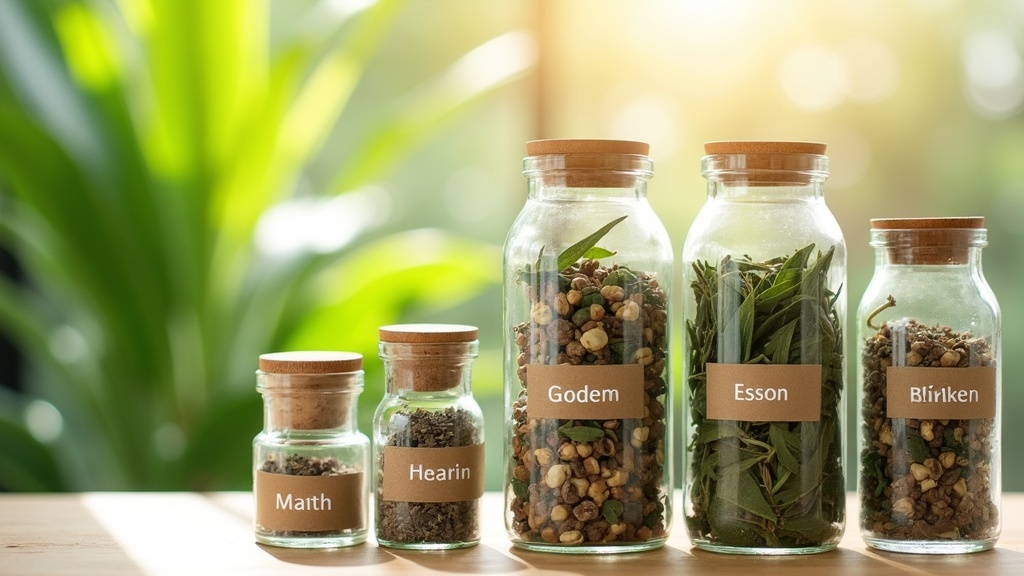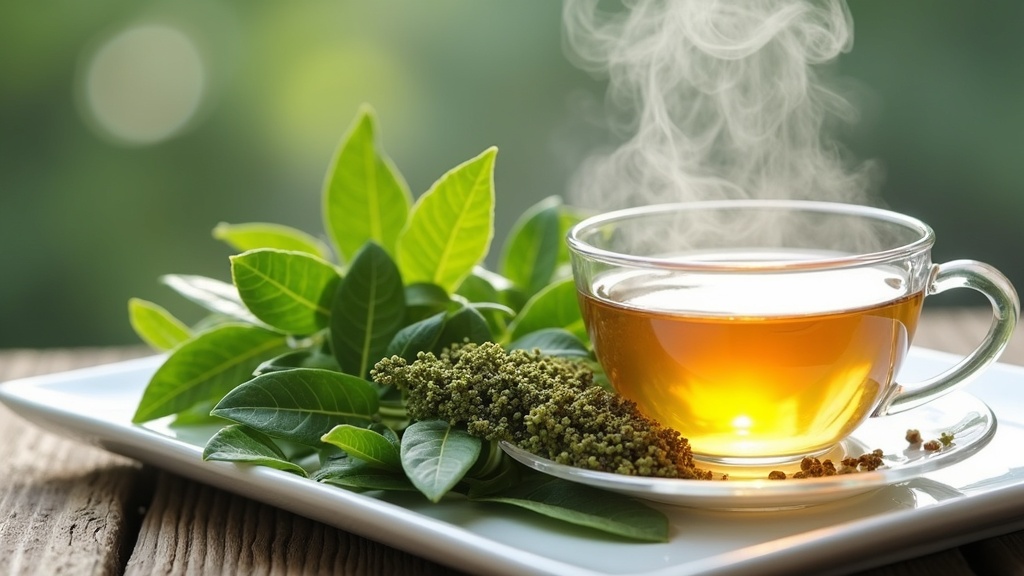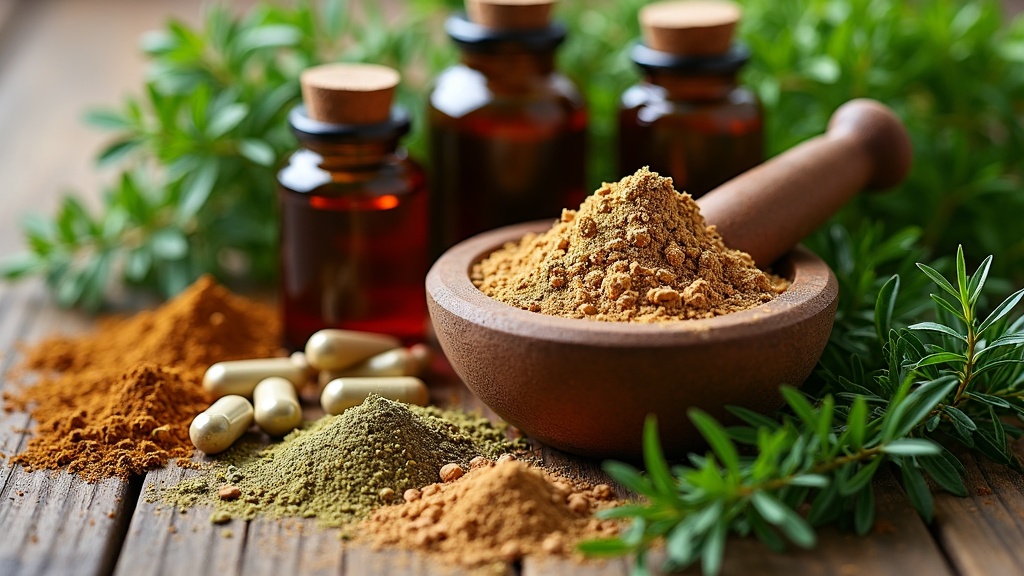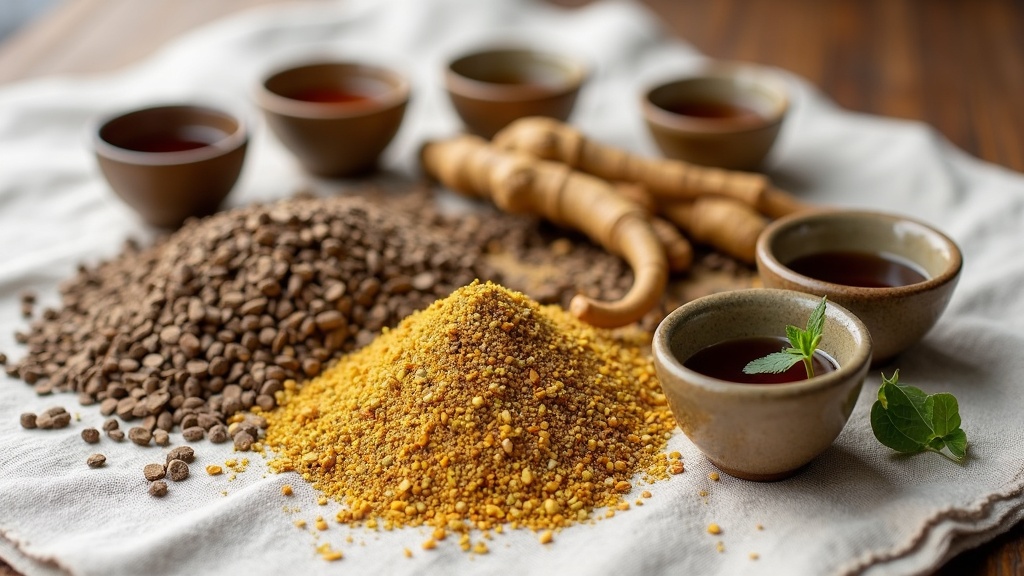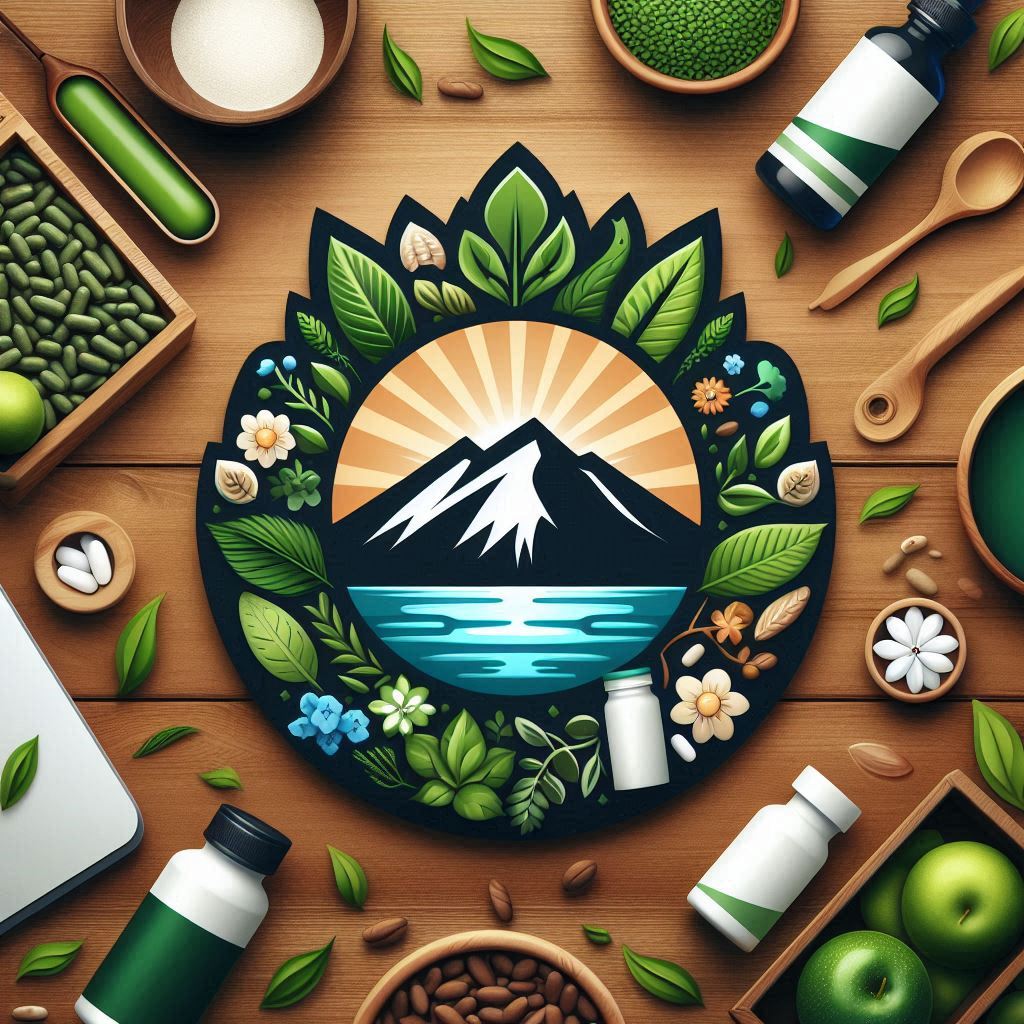Emerging herbs are having a serious moment right now, both in wellness circles and on store shelves. The number of new plant-based remedies making waves in health, nutrition, beauty, and even sports supplementation is pretty wild. While some of these herbs have roots in traditional medicine systems, others have only started to get real attention after research studies or major wellness trends finally caught up to their benefits.
Before jumping into the most buzzworthy herbs on the market, I want to cover what’s really important when it comes to adding any herbal remedy into your routine. Then, I’ll break down the top emerging herbs of 2024, what they do, how people are using them, tips for sourcing quality, plus some practical advice if you’re curious about making them part of your life. There’s a lot to unpack, but I’ll walk you through all the details so you can feel confident exploring these new plant-powered options.
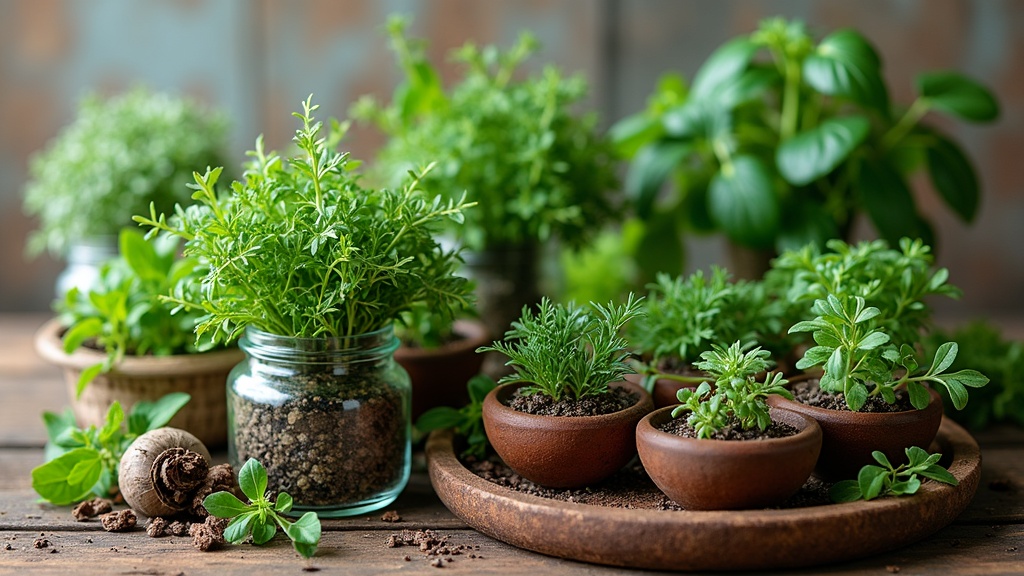
Quick Herbal Highlight Box
Topic: Emerging Herbs of 2024
Review Focus: Safety, science, real-world use
Who it’s for: Wellness enthusiasts, herbalists, anyone eager for natural health options
Price range: Varies, from a few dollars up to premium supplement prices (depends on source/form)
Top Trends: Adaptogens, cognitive boosters, digestive support, and skin-health standouts
Key Considerations Before Trying New Herbs
Trying out new herbal supplements is kind of exciting, especially as more people search for natural ways to support their health. But there are a few things I always check before adding an emerging herb to my routine:
- Your health needs: Think about why you want to use herbs; energy, stress, gut health, immunity, sleep, or something else?
- Current medications: Some herbs interact with prescription medicines. Always read up on possible interactions or talk with your doctor or pharmacist.
- Pre-existing conditions: If you have issues like liver, kidney, or heart concerns, certain herbs could cause problems or overload your system.
- Dosage and bioavailability: More isn’t always better. Choose forms of herbs that are shown to be absorbed well and follow suggested amounts.
- Quality, testing, and purity: Look for third-party tested, reputable brands. Wildcrafted or organic can also help minimize unwanted contaminants.
- Side effects: If you notice anything odd like digestive upset, headaches, itching, or even low blood pressure, it could be from the herb. Use new products one at a time so you can track what’s working for you.
- Scientific support: Some new herbs are research-backed while others are mostly anecdotal so far. Check out clinical trial results or reviews from credible herbal experts for more info.
- Legal or regulatory status: Not all herbs are legal or approved in all countries. Some get re-evaluated or banned after safety concerns.
- Budget and sustainability: Will you be able to keep this up long-term in terms of both time and cost?
And honestly, whenever I’m unsure, I reach out to someone who knows herbs inside and out—a trained herbalist, nutritionist, or even a knowledgeable pharmacist. A quick chat can clear up a lot of guesswork.
The Top 9 Emerging Herbs You Should Know About in 2024
Here’s a look at nine of the most interesting, research-backed, and buzzed-about herbs that are catching my attention, and pretty much everyone else’s, this year. For each one, I’ll break down what makes them special, how people are using them, and what the latest research says.
1. Cistus Incanus (Rock Rose)
Cistus incanus, nicknamed “rock rose,” is a pink blossomed Mediterranean herb. While it’s been used for hundreds of years in Greek herbal medicine, it’s now trending thanks to its powerful antioxidant and antimicrobial properties. Cistus tea is being promoted for immune support, and some users also swear by its role in fighting colds, viruses, and even supporting oral health.
What stands out is its polyphenol content; those plant compounds can neutralize free radicals and give your immune system a natural boost. Modern research suggests cistus can inhibit some viral activities and benefit gum health, though much of the hype comes from traditional use and small pilot studies rather than massive clinical trials. It’s worth checking out for anyone into immune self-care or gently detoxifying herbal teas, just keep expectations realistic.
2. Fadogia Agrestis
Fadogia agrestis is a shrub native to Nigeria and a few neighboring countries. It’s all over supplement forums because of its reputation among bodybuilders and those interested in natural ways to boost libido and athletic performance.
An impressive part of the Fadogia story is the current debate around its actual effects. Most of the detailed research has been on animals, but many users swear by its supposed testosterone supporting benefits. People often turn to it for energy, stamina, and hormonal health. If you give it a try, go low and slow at first and keep track of how your body responds; there are still some unknowns, and some batches have been flagged for purity issues.
3. Jiaogulan (Gynostemma pentaphyllum)
Known as the “herb of immortality” in parts of Asia, Jiaogulan has seen a huge wave of interest due to claims that it helps with stress adaptation, healthy cholesterol, and blood sugar support. Its main active ingredients, called gypenosides, act as adaptogens, helping your body adjust to physical and mental stress.
People usually drink it as tea (it tastes a bit like grassy, sweet green tea), but you’ll also spot it in adaptogen blends and even skincare formulas. Early studies show it can modulate inflammation and may help with cardiovascular and metabolic health. What people like most is its gentle, calming effect without making you sleepy.
4. Sceletium tortuosum (Kanna)
Kanna, or Sceletium tortuosum, is a succulent plant used traditionally in South Africa, and it’s quickly making its way into mood support blends. It’s best known for its role in promoting relaxation, balanced mood, and sometimes even cognitive clarity.
The main active ingredients, called mesembrine alkaloids, appear to influence serotonin pathways, so kanna is getting a lot of attention for non-prescription anxiety and stress management. You’ll see it as a sublingual, capsule, or sometimes mixed into functional beverages. Doses matter a lot here, as very high intakes can have a stimulating effect, but proper amounts are reported to help people stay calm in stressful situations. Anyone on antidepressants should check for potential interactions before trying kanna.
5. Dichrostachys glomerata (African Dream Herb)
This West African pod-producing shrub has been used for generations as an aid for vivid dreaming, sleep rituals, and even digestive health. The seeds and roots are rich in active compounds that appear to interact with the central nervous system, but there’s also interest in its effect on metabolic health.
People are using African Dream Herb as powdered root, tinctures, and in tea blends. Some pursue it for dream enhancement, while others are drawn to early animal studies hinting it could help with weight management and blood sugar. Caution is needed, though, as effects can be pretty potent; starting small is smart, and its safety in pregnancy or with long-term use is still uncertain.
6. Bacopa monnieri (Waterhyssop, Brahmi)
Bacopa monnieri isn’t totally new, but it’s having a real surge outside of India right now thanks to research linking it to improved memory, focus, and cognitive wellness. Used in Ayurvedic medicine for centuries, Bacopa’s active compounds (bacosides) have a mild “tonic” effect on the brain.
Some of the most promising studies have shown Bacopa to be helpful for managing occasional forgetfulness, mental fatigue, and feelings of stress. I’ve found it’s best taken consistently for at least several weeks for nerve regenerative benefits to show up. Some people may notice digestive changes or loose stools, so again, go with the lowest effective dose at first.
7. Andrographis paniculata
Andrographis is getting international attention now, especially since pandemic era interest in immune herbs went through the roof. This bitter tasting leaf is commonly found in Southeast Asia and is often called “king of bitters.” It’s used in herbal capsules and tinctures for immune and inflammatory balance.
The key actives (andrographolides) appear to lower inflammation markers and may help fend off upper respiratory ills, particularly when taken at the first sign of throat tickle or sniffles. Studies in humans show it can help with cold symptoms, though dosing and product quality do matter. Some users notice a mild headache or digestive upset if they take too much, but most tolerate it well when sticking to recommended amounts.
8. Ashwagandha Gummies and Extracts (Withania somnifera)
Ashwagandha isn’t an “emerging” herb by history; it’s a legendary Ayurvedic root, but the modern forms and combinations are new territory. Right now, ashwagandha in the form of gummies, concentrated extracts, and innovative blends is seeing huge growth. These versions are touted for smoother absorption, better taste, and easy dosing compared to oldschool powders.
The main uses are still stress relief, better sleep, less anxiety, and support for physical stamina or hormone balance. Modern research continues to find new potential, including for mild mood concerns and even workout recovery. Quality is all over the place, so I doublecheck brands for proper extracts (like KSM-66 or Sensoril) and dose transparency. Effects build over time rather than overnight.
9. Centella asiatica (Gotu Kola)
Gotu kola has always been well loved in traditional medicine (Ayurveda and Chinese medicine, to name a few), but it’s getting a spotlight boost now because of its role in collagen support, focus, and even wound healing. Herbal capsules, topical creams, and even lattes blending Gotu kola powder into milk are popping up in health shops.
It’s rich in triterpenoids, which may support brain cell health, skin elasticity, and even reduce feelings of anxiety. Topical use is common for people dealing with stretch marks or scars. When taking it orally, users should watch for interactions with sedative meds and go for high quality, clean sourced products.
Why Are These Herbs Trending Right Now?
Several factors are driving the popularity of these emerging herbs in 2024:
- Resurgent interest in traditional medicine: There’s a major push to validate old remedies using modern science.
- Desire for natural alternatives: Concerns about prescription side effects have more folks exploring nature’s pharmacy.
- Globalization of herbal wellness: With online shopping, anyone can buy adaptogens from Asia, Africa, or South America.
- Constant wellness innovation: Supplement companies keep looking for unique, marketable ingredients that set their blends apart.
- Community influence: Forums, social media, and podcasts amplify every new “miracle herb” with user stories and influencer picks.
It’s not just hype; people are seeking out herbs because they notice real improvements, especially in stress, sleep, skin health, and energy. The increased research, plus greater awareness about where herbs come from and how they’re processed, means quality keeps getting better, too.
How to Shop for Quality Herbs: My Go-To Checklist
Herbs work best when you get them from a trustworthy source and use the right form for your needs. Here’s my quick checklist for picking out quality herbal products:
- Certification matters: Look for “certified organic,” “wildcrafted,” or “third-party tested” labels. Even better if the brand is transparent about growing, processing, and testing methods.
- Clear labeling: Choose products with real ingredient lists; avoid vague “proprietary blends” that don’t specify herb amounts.
- Extraction info: The label should tell you if it’s a whole herb, standardized extract, or concentrate (for example, “30% bacosides in Bacopa monnieri”).
- Freshness or smell: Loose herbs should have a strong scent and vivid color without signs of mold or musty smells.
- Capsule, powder, gummy preference: Different forms suit different needs; powders and tinctures are often stronger, but gummies and capsules are easier to take daily.
- Country of origin: Some herbs from certain regions are more potent, or sometimes more likely to be contaminated. Research which source is ideal for the herb you’re interested in.
- Reputation and reviews: I always check both herbalist recommendations and verified buyer reviews before trying a new brand.
- Allergy and contaminant info: Scan for warnings about heavy metals, allergens, or irritants (Good brands will test for these).
Quality isn’t just about one detail; the best products are made by companies who care about both purity and potency, and who invest in regular quality checks.
How People Use Emerging Herbs in Daily Life
Here’s what I’m seeing (and hearing) about how people are adding these trending herbs into their routines. Some folks love one at a time, while others like customized blends:
- Teas: Classic for herbs like cistus, jiaogulan, and gotu kola. Tastes can vary; some are minty fresh while others are earthy or bitter.
- Pills or softgels: Gummies, capsules, or tiny tablets are low effort. Great for standardized extracts like ashwagandha, Bacopa, or Fadogia.
- Tinctures or liquid drops: Fast absorption, subtle flavors, and easy to adjust dose (think Andrographis, Kanna, or African Dream Herb).
- Topical creams: Useful for Gotu kola or some blends that target skin repair.
- Powders and blends: Stirred into smoothies, coffee, or yogurt. Adaptogen mixes often combine several emerging herbs for stronger benefits.
Herbal effects are usually gradual, not instant. Most people start with a single herb, track how they feel for a few weeks, then try mixing with others to create their perfect daily routine.
The Science Behind the Herbs: Where Things Stand
Not all emerging herbs have rock solid research just yet, but several have a growing body of studies to back them up. Here’s a look at what’s out there as of 2024:
- Bacopa monnieri: Dozens of trials suggest improved memory and cognitive performance with regular use (see PubMed studies).
- Andrographis paniculata: Meta-analyses show benefits for reducing duration and severity of upper respiratory infections (research source).
- Sceletium tortuosum: Animal and small human studies report stress relieving and anti-anxiety properties (PubMed study).
- Cistus incanus: Antimicrobial effects and potential for immune support based on lab studies (study link).
- Fadogia agrestis, Dichrostachys glomerata: Most evidence here comes from animal models, and peer reviewed human studies are still limited. Real-life feedback is mixed, and research is growing.
- Ashwagandha: Hundreds of studies now confirm its adaptogenic and anti-stress properties (reviewed at NCBI).
- Gotu kola: Modest evidence for wound healing, mental function, and anxiety reduction (see study for details).
The bottom line: Some herbs are well established, while others still need bigger, longer-term trials. Reading up and starting slowly is your best bet to enjoy benefits safely.
Where to Find Emerging Herbs and Best Ways to Take Them
Emerging herbs are easy to find in 2024, from health food stores to online supplement retailers. I always prefer:
- Specialty herbal shops: Staff are usually trained to help with quality questions, and there’s a bigger selection of pure or raw forms.
- Reputable supplement retailers (online or brick and mortar): Check reviews and make sure they stock fresh products; herb potency drops with age.
- Direct from brands: Some of the best herb companies sell straight from their websites, plus they post lab certificates for transparency.
When trying a new herb, start with the lowest suggested dose, sometimes even half. Track your experience and see if you notice any changes in a week or two before increasing. It’s always ok to skip a day if you start feeling anything off.
What I Wish I Knew Before Exploring Emerging Herbs
Here are a few practical lessons I’ve learned that might help you if you’re new to the world of advanced botanicals:
- Start with ONE new herb at a time so you know what’s actually working for you.
- Some benefits, like clearer mood or easier sleep, happen gradually; give it at least 2-4 weeks before making a call.
- With products sourced from overseas, always ask about contamination testing; look for “batch tested” or “COA available” mentions.
- If you’re hoping for fast results (like from a sleep, energy, or stress herb), look at liquid tinctures or teas first; they absorb fastest.
- Herbal effects are subtle. If you’re sensitive to caffeine, adaptogens might feel way stronger. Use smaller serving sizes.
- Peppermint, licorice, or ginger pairs can help offset strong or bitter flavors in teas and blends.
- If you notice nausea, lightheadedness, or lingering headaches, press pause and reassess.
Even if you’ve used herbs for years, every emerging plant can work a little differently. A journal for tracking what you take and how you feel is super useful.
Opportunities and Cautions with Emerging Herbs
There’s a lot to be excited about when it comes to these new herbs. Options for everything from energy to immunity, skin to sleep, can mean more choice and better ways to support wellness naturally. Still, it’s really important to stay grounded:
- If a product sounds like a cure all, that’s a red flag. Authentic herbal formulas tend to focus on balance, not overnight miracles.
- Mixing too many herbs at once can work against you; stick with a couple that fit your specific needs.
- If you’re pregnant, breastfeeding, under 18, or dealing with a diagnosed health concern, ask your doctor first.
- Look for clinical trial summaries and professional herbalist input rather than influencer claims.
- Herbs are strongest when paired with other healthy habits: good food, regular movement, and sleep.
- Sustainability matters: Herbs harvested without regard for the environment risk extinction and loss of local livelihoods. Choose fair trade and eco conscious brands whenever possible.
Frequently Asked Questions About Emerging Herbs
Are emerging herbs safe for everyone?
Most people can use new herbs with the right research and guidance, but young children, the elderly, pregnant or breastfeeding people, and those on certain meds should always check first.
Is there a “best” form; tea, tincture, capsule; for these herbs?
It really depends on your preferences and goals! Teas are gentle and soothing, tinctures act fast, and capsules or gummies are easy for daily routines. Powders pack the most in a small dose, but the taste can be intense.
Where can I read reviews from other real users?
Try dedicated herb forums, reputable supplement store websites, and communities like Reddit’s r/Supplements or r/Herbalism.
Do I need to cycle herbs or take them every day?
Some adaptogens and tonics are meant for daily, long-term use, while others may be best in 4-6 week cycles with a break between. The label or a trained herbalist can guide you based on the herb’s function.
Could these herbs help with diagnosed health issues?
Some people do use herbs for specific concerns, but these products are best seen as supportive rather than definitive treatments. Check with healthcare providers before making changes if you have any condition or take prescription meds.
My Thoughts on the Future of Emerging Herbs
Plant medicine is seeing a creative rebirth, and the research pace is picking up. New herbs will keep coming onto the scene, giving people more options for personalizing self-care. I’m excited about the innovation happening now, not just in new products, but in the way companies and practitioners value quality, sustainability, and transparency.
The most exciting part of exploring these herbs? Learning what your body responds to and finding a new sense of empowerment in daily health. If you try one or more of these trending botanicals, you might just wind up with a fresh appreciation for what nature has to offer, plus a few new favorites for your kitchen or wellness cabinet.
Take your time, do your homework, and have a little fun experimenting. The emerging herb world is only going to keep growing from here.
